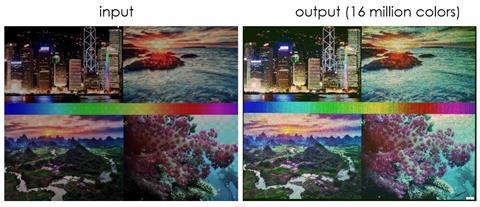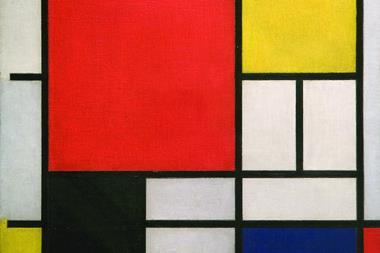By controlling how complementary strands of DNA bond together to form duplexes, researchers at the University of Vienna in Austria, have found a way to ‘paint’ with DNA on a microarray canvas.
To create the colour, short strands of DNA were linked to fluorescent markers that emit either red, green or blue light, before being matched to a long complementary DNA strand bound to a surface. The researchers were able to fine-tune the stability of the duplex by removing bases of the DNA strand at pre-defined positions to vary the intensity of each colour; the lower the stability, the darker the shade.

Each of the shades they created could then be mixed and matched within a single DNA duplex to create a large palette of 16 million colours, or 24-bit colour depth, surpassing the previous 8-bit that has previously been achieved with similar techniques.
Using photolithography and maskless array synthesis, the pallet was used to reproduce digital images with high colour fidelity at the micrometre scale in an approach the researchers described as ‘miniaturised DNA-based painting’.
The researchers say that the techniques used to provide this high level of control in duplex affinity could also be useful in biosensors and diagnostic devices.
References
T Kekić and J Lietard, J. Am. Chem. Soc., 2023, DOI: 10.1021/jacs.3c06500

















No comments yet